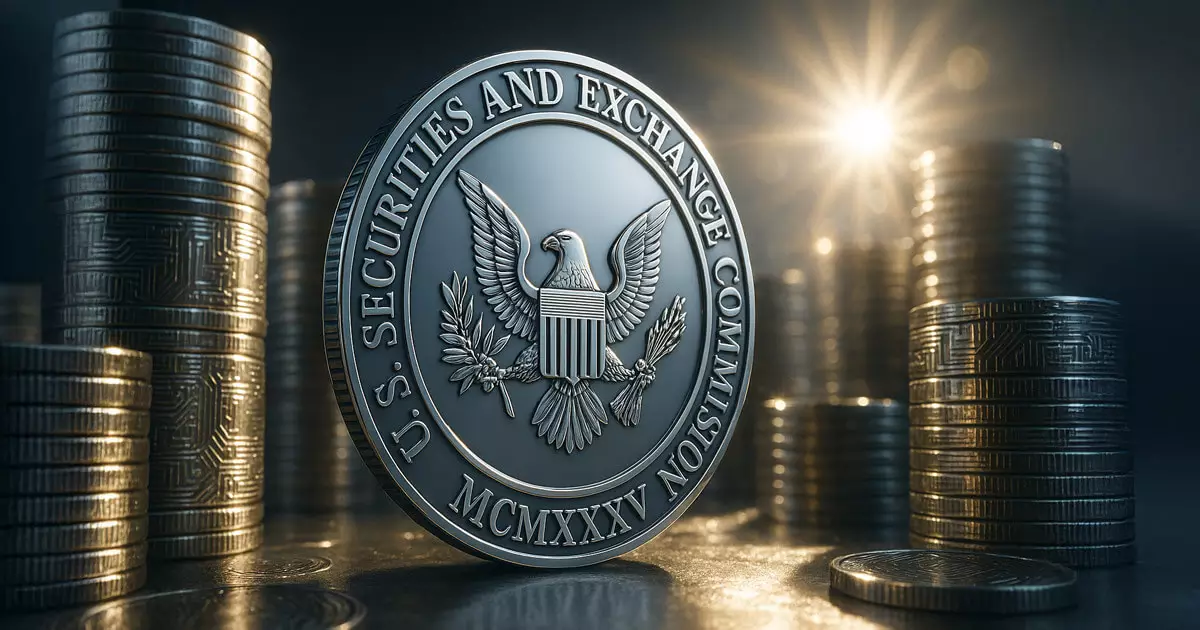In the rapidly evolving world of cryptocurrency, regulatory clarity is both a necessity and a luxury. The recent guidance issued by the US Securities and Exchange Commission (SEC) regarding crypto staking marks a significant turning point for the blockchain community. While the SEC has long viewed crypto with skepticism, particularly during the tenure of former Chair Gary Gensler, this new stance offers a glimmer of hope for the industry’s future. Let’s delve into this development and explore why it is so pivotal.
Shifting the Regulatory Landscape
The SEC’s announcement on May 29 reveals a paradigm shift in how government regulators perceive decentralized finance activities. By clarifying that common forms of crypto staking—such as self-staking and delegated staking—do not fall under securities laws, the SEC is effectively providing a much-needed breathing room for participants. Essentially, it is signaling that the activities which underpin the legitimacy of blockchain networks can proceed unencumbered. This is an encouraging sign for enthusiasts and investors alike, affirming that innovative financial practices can flourish outside the confines of strict regulatory frameworks.
Investors have often found themselves in a murky regulatory swamp, filled with uncertainty, thanks to the lack of clear guidelines. This has often stifled innovation, pushed projects overseas, and left American investors hesitant to engage with cryptocurrency networks. The SEC’s new guidance could pave the way for a rejuvenated American crypto landscape, allowing stakeholders to operate with greater confidence.
The Core of Blockchain Efficiency
Staking acts as the backbone of numerous blockchain protocols, particularly those using a proof-of-stake consensus mechanism. The process involves locking up tokens to validate transactions, thus ensuring the network’s stability and security in exchange for rewards. By recognizing the legitimacy of staking, the SEC is acknowledging its integral role in the operation of these blockchain networks. This is a substantial shift from the past scrutiny faced by staking platforms, suggesting that the SEC is now willing to work with innovation rather than against it.
SEC Commissioner Hester Peirce’s support for this decision provides additional credence to its importance. Known for advocating a regulatory framework that encourages growth rather than stifling innovation, Peirce underscores that American users have been dissuaded from participation due to regulatory dread—something she views as detrimental to the blockchain ecosystem.
Criticism from Within the Ranks
Nevertheless, not everyone is on board with this new guidance. Commissioner Caroline Crenshaw has raised concerns over what she perceives as a departure from established legal precedents, notably the Howey Test, which helps determine whether an asset qualifies as a security. Her dissent highlights the discord within the SEC itself and raises broader questions about the commission’s approach to innovation. Critics argue that the SEC’s “fake it till you make it” methodology could lead to uncertainty and inconsistency in future regulations.
This internal friction could become a defining characteristic of the SEC’s relationship with the crypto industry going forward. If the Commission cannot present a unified stance, it risks undermining investor trust and complicating legal landscapes further.
Evolving Investment Opportunities
The implications of this guidance are expansive, particularly for financial products such as Ethereum exchange-traded funds (ETFs). With staking now deemed legitimate and not subject to securities registration, the potential for these financial instruments to engage in staking activities could unlock new revenue avenues for investors. This is a key development, as it could increase the attractiveness of crypto investments within regulated markets.
Recently, Ethereum ETFs have shown momentum with a staggering $480 million in inflows over just nine days, proving that there is a robust appetite for crypto investing amongst more traditional investment vehicles. If staking becomes integrated into these ETFs, it could transform them into even more enticing options for investors already wary of the myriad risks associated with cryptocurrency investments.
The SEC’s guidance on crypto staking may point to a promising era of clarity in a space marred by ambiguity and confusion. Yet, it remains to be seen whether this newfound leniency will indeed spur growth or merely serve as a gateway to further scrutiny. The crypto ecosystem is at a critical juncture; thus, it will require vigilant oversight and a balanced approach to ensure that innovation and regulation can coexist harmoniously.
















Leave a Reply